Stu Kauffman: Europe's Origin of Life Summit
Stu Kauffman: Europe's Origin of Life Summit
By Suzan Mazur
October
29, 2012
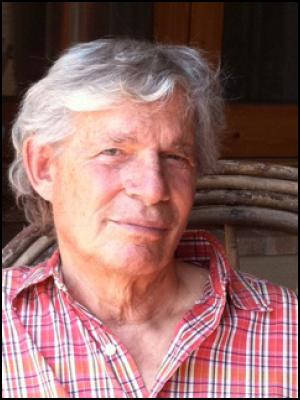
STUART
ALAN KAUFFMAN
"You're in the Village, you can't look at the biosphere," joked Stu Kauffman, the legendary Complexity pioneer, in a conversation from Seattle with me in Greenwich Village, just days before Hurricane Sandy shut down New York, leaving Manhattan south of 42nd Street powerless. As I now write by candlelight, another of Stu Kauffman's evolutionary thoughts resonates: "Not only do we not know what will happen, we don't even know what CAN happen."
Moreover, Systems Chemist Gunter von Kiedrowski, to whom Kauffman "handed-off" his brainchild -- his Origin of Life - CERN collaborative project -- after last year's initial workshop, told me this: "We can't travel back in time, we'll never know the historical course [of the origin of life]."
So exactly where does that leave origin of life investigation? Hopefully we'll know more following the CERN strategic talks (private) in February 2013.
Kauffman, von Kiedrowski, et al., want to tap CERN's phenomenal computer power to create chemically real reproducing and co-evolving protocells, and to apply some of CERN's organizational models to engineer an origin of life scholar grid that links experiments, researchers and sources of funding. Von Kiedrowski thinks the strong magnetic fields "the collider deals with" will be useful.
But protocells based on what definition of life? Presumably, this question will be high on the list of topics of discussion in February.
Here's where a US - European divide appears, which some are calling a rivalry. NASA has taken a practical cost-effective approach to origin of life investigations and recently awarded $40 million in grants to various NASA Astrobiology Institute teams to search for signs of life in the Universe, including $8 million to Carl Woese and Nigel Goldenfeld, et al., to figure out what life on Earth is.
Woese told me several weeks ago, "That's the problem. We don't know what it is."
Meanwhile, Europe seems to be moving in a more conceptual direction, more willing to invest in protocell development with an eye to commercial applications and revolutionizing industry.
CERN is hosting the upcoming origin of life meeting in Geneva with Templeton Foundation funding it. Money coming from the EU has not yet materialized but there has been significant dialogue and interest in underwriting the emergence of chemically reproducing protocells capable of open-ended evolution.
It is unclear exactly why Templeton is funding "radical science," what its stake is in the project, apart from leverage on the ethics of creating life, surely to be on the February agenda.
Here are some of the participants in the Geneva talks, followed by my interview with Stu Kauffman, who gives further analysis of the upcoming CERN-Origin of Life project plus so much more.
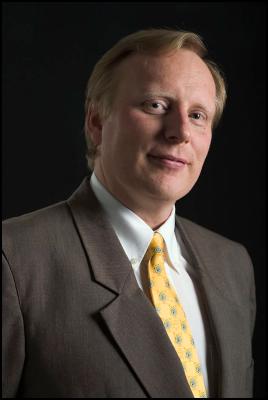
Markus Nordberg
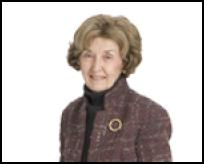
Mary Ann Meyers
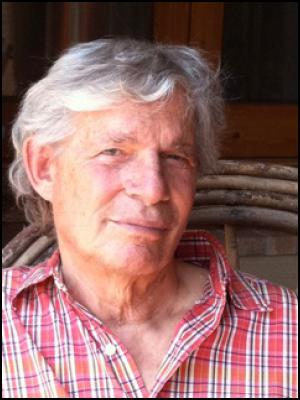
Stu Kauffman
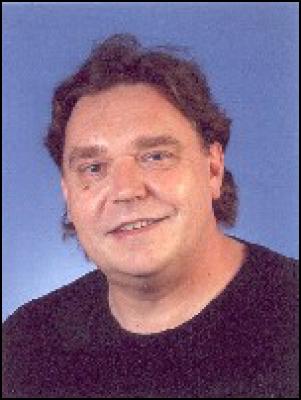
Gunter von
Kiedrowski
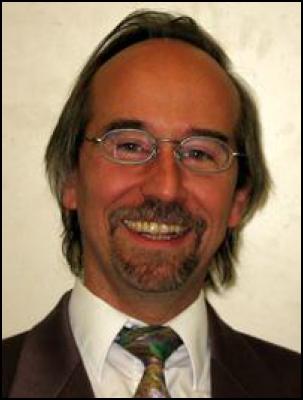
Eors Szathmary
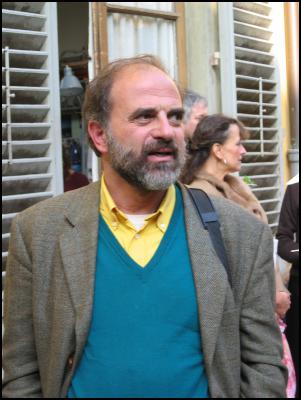
Giuseppe Longo
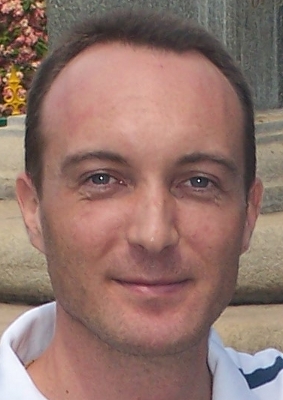
Wim
Hordijk
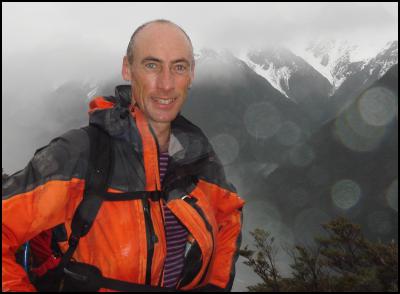
Mike Steel
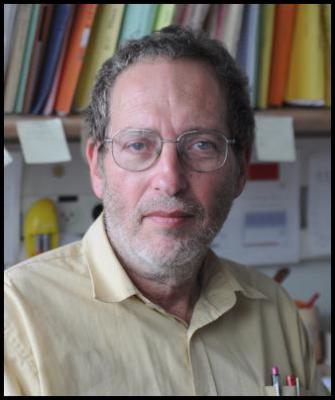
Doron Lancet
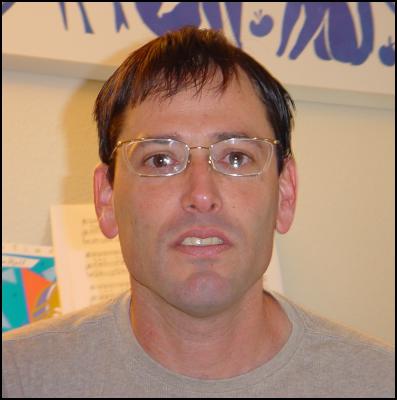
Gonen Ashkenasy
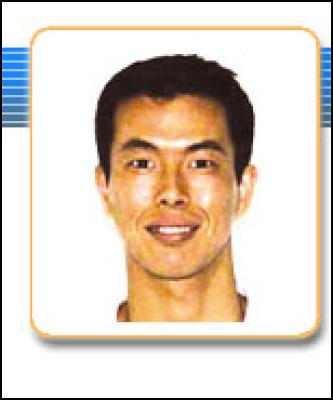
Tetsuya Yomo

Marcelo Gleiser
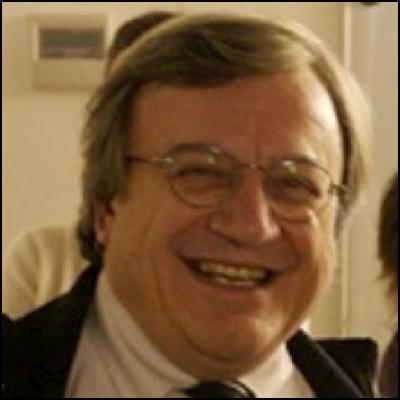
Roberto Serra
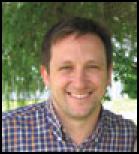
Kepa Ruiz
Mirazo
Stu Kauffman began his career as a medical doctor, a surgeon at the National Cancer Institute, Bethesda, and is currently involved with rethinking the way American medicine treats cancer.
The world was first introduced to Kauffman's trailblazing of Complexity in the 1980s at Santa Fe Institute, where he taught for almost 20 years. In 2005, he moved to Canada and founded the Institute for Biocomplexity and Informatics at the University of Calgary, also serving as its director for five years. In 2009, Kauffman was invited as Visiting Professor, Harvard Divinity School. Since 2010, he's been Distinguished Finland Professor at Tampere University of Technology, and Distinguished Visiting Professor, Biochemistry and Mathematics, University of Vermont.
Stuart Kauffman has a BA in Philosophy, summa cum laude, from Dartmouth College, where he was Phi Beta Kappa; and a BA in Philosophy, Psychology and Physiology from Oxford University, where he was a Marshall Scholar. He received his MD from the University of California, San Francisco.
Among Stuart Kauffman's many honors are: MacArthur Fellow; Doctor Honoris Causa, Faculty of Bioengineering, Universite Catholique de Louvain; and Fellow, Royal Society of Canada.
Some of his awards include: Gold Medal from Accademia Linci, Rome; Herman A. Simon Award from the New England Complex Systems Institute; and Wiener Gold Medal from the American Cybernetic Society.
In 2009, Kauffman served on the science advisory committee for the historic Vatican evolution conference, and he is currently on the science advisory boards of GNS Healthcare, as well as Origins Institute, McMaster University, among many advisory roles past and present.
Kauffman has been issued a dozen patents (US, French, Dutch, Japanese), is the author of five books: Molecular Evolution on Rugged Landscapes: proteins, RNA and the immune system (with A. Perelson); Origins of Order: Self Organization and Selection in Evolution; At Home in the Universe; Investigations; Reinventing the Sacred: A New View of Science, Reason, and Religion and 200 scholarly papers.
At a time when society seeks to reduce all to specialist of one sort or another, Stuart Kauffman champions the value of being whole, and human. My interview with Stuart Kauffman follows:
Suzan Mazur: I understand that the Origin of Life - CERN collaboration is your brainchild. Can you confirm who the participants are for the strategic meeting coming up in three months? Is this the complete list?: Markus Nordberg of CERN and Mary Ann Meyers of The John Templeton Foundation -- who are cofunding the February 2013 gathering, Eors Szathmary and Gunter von Kiedrowski -- who are hands-on directing the project, plus Wim Hordijk, Mike Steel, Doron Lancet, Gonen Ashkenasy, Tetsuya Yomo, Roberto Serra, Marcelo Gleiser, Kepa Ruiz Mirazo.
Stu Kauffman: Yes, that's the unofficial list of many of the people likely to attend. Here's the story. My current position as Finland Distinguished Professor at Tampere University of Technology led, by sheer luck, through the "FEDIPRO" Board, to my meeting Markus Nordberg, who's of Finnish and Swedish descent and is co-head of the Atlas project at CERN. Markus said we (CERN - Atlas) want to use our computing power and organizational skills to help other fields. Do you know a field that might be ready to take off?
I said, "God yes, Markus, do you mean that? The origin of life field is getting ready to explode."
And Markus said, "Well why don't you gather a group of about 25 or 30 people."
After years of working in the origin of life field, I have a bunch of friends, and so I called some of them and everybody said "Sure." About seven of us a year and a quarter ago had a brainstorming meeting on origin of life in Geneva at CERN. I have since handed off the Origin of Life project to Eors Szathmary and Gunter von Kiedrowski, and they're fantastic!
Suzan Mazur: I saw the proceedings online of the 2011 CERN Origin of Life "Brainstorming Workshop". Are Dave Deamer and Harold Morowitz involved with the 2013 meeting?
Stu Kauffman: David and Harold are certainly part of the group I've pulled together.
Suzan Mazur: And Giuseppe Longo?
Stu Kauffman: Giuseppe is another wonderful story. Giuseppe is just a bloody amazing guy. He's a mathematician at the Ecole Polytechnique, Paris. I hope that Giuseppe will come.
Suzan Mazur: I watched one of his YouTube presentations discussing Steve Gould's work.
Stu Kauffman: I have collaborated on something with Giuseppe I would love to tell you about.
Gonen Ashkenasy at Ben Gurion is someone to speak with also. Gonen has a nine-peptide collectively autocatalytic set he created with Reza Ghadiri at the Scripps Research Institute. Gonen has the most complicated collectively autocatalytic set that I know. It is very well defined. He's a guy in his 40s. At full strength.
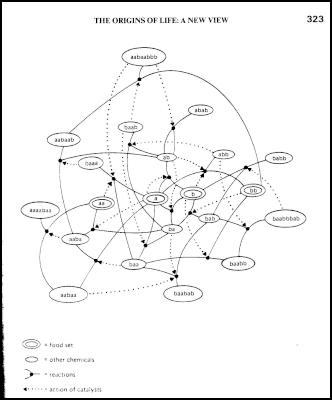
Click for big version.Stuart Kauffman's
Collectively Autocatalytic Set
Suzan Mazur: Can we set down some of the basic reasons for your collaboration with CERN? My understanding is that CERN wants to help with computing, i.e., automating the creation of a protocell, and also help organize the origin of life field by way of a grid connecting various origin of life experiments, investigators and funding sources.
Stu Kauffman: Yes, they want to help by providing computing power for the substantial theoretical work, link the theoretical and experimental scientists, and provide organizational skills learned at CERN. Here's what I know that Markus would say. He would say cautiously that CERN's business is physics, not biology. On the other hand, I am saying to him that somehow biology IS physics, it's just not particle physics. So Markus would rightly say that where we are now is that CERN is committed, without a doubt, to help fund the meeting we're about to have in February. They have before them about nine proposals for computational experiments from the Origin of Life group that they've had for several months. Wim Hordijk may go to CERN to help get these programs running.
Mary Ann Meyers has been wonderful. Thanks to her Templeton Foundation is funding the travel for participants and Markus is funding lodging and meals. We will organize the actual meeting of the 25 of us. There may be two meetings.
Suzan Mazur: And the funding to move forward is coming from Europe?
Stu Kauffman: Once again you need to speak to Gunter. Aside from co-organizing the February meeting, Gunter is a brilliant chemist. He's talking about making large scale instruments that are hundreds of NMR machines, for reasons that I understand partially. He was talking about this two years ago. Gunter, by the way invented Systems Chemistry. He also made the first reproducing molecule in the 1990s and the first collectively autocatalytic set of molecules -- they happen to be DNA molecules.
Suzan Mazur: I look forward to hearing more from Gunter. Do you know what's on the agenda for the 2013 meeting?
Stu Kauffman: Yes. Certainly it involves collectively autocatalytic sets, whether they be peptide sets or RNA sets or DNA sets. It involves liposomes where Pier Luigi Luisi has shown that you can make liposomes that grow and bud and divide. Certainly it will involve getting liposomes to contain autocatalytic sets where Roberto Serra has shown theoretically that if they both divide, the two systems synchronize their division so that you've got a protocell. There's much to be added, but you've got the start.
Meanwhile, Eors led a group of us to take my own model of the emergence of collectively autocatalytic sets and ask the question, yes, but can they evolve? And yes, collectively autocatalytic sets can evolve. So it can be the basis for the early evolution of a protocell where it's made out of peptides or RNA or both or whatever. So this will certainly be on the program.
Now rather astonishingly, is something that I co-invented with Gabor Vattay and Samuli Niiranen. A version may be realized in protocells. Gabor is a quantum physicist in Budapest and Samuli, a computer scientist in Finland. Two years ago we kind of discovered something we called the "Poised Realm," which Gabor thinks is a new state of matter which hovers reversibly between the quantum world and the classical world, back and forth. More and more we believe the Poised Realm is real and things can go from the quantum to being classical for all practical purposes and back. This is utterly novel if true. And we don't yet know how this may apply to the origin of life.
I talked about the Poised Realm when I met with the European Systems Chemists. And many of them liked it a lot. To my surprise, Gunter and Eors wanted it to be part of this meeting. Markus tells me some of the CERN particle physicists are interested in the Poised Realm. I'm thrilled because I think maybe Gabor's right. Maybe we have discovered a new state of matter. If so, luck is upon us and it may have all kinds of valuable applications.
Suzan Mazur: Fascinating.
Stu Kauffman: For example, Suzan, it turns out the light harvesting molecules in cells show long lived quantum coherence at ambient temperature. Physicists thought this impossible due to exponentially fast decoherence over a femtosecond. Quantum decoherence is thought to be one of the ways quantum systems become classical, at least for all practical purposes. Decoherence is the loss of what's called phase information to their environment, if they're open quantum systems. Gabor has shown mathematically that Poised Realm has two axes (this is Gabor, me and Samuli), a Y axis goes from quantum to classical going up the Y axis and then to quantum going down the Y axis. Then there's an X axis, which you get by turning the Hamiltonians from order and criticality to chaos. Criticality is at the metal insulator transition for a quantum system.
And Gabor has done some calculations suggesting that criticality is particularly interesting where on the X axis many molecules seem to be located. We think it may have implications for drug discovery. But Gabor's the expert. He's done the real work. Gabor has shown pretty much for sure theoretically that the rate of decoherence is very different at different points on the X axis. If you're chaotic, decoherence can happen exponentially fast, which is what all the physicists thought. If you are either ordered or critical, or maybe just critical -- he's checking to be sure -- decoherence is very slow. It's what's called a power law. So on Cartesian X Y axes, plotting logtime on the X axis, log coherence on the Y axis, you get a straight line down to the right. This is power law, very slow decoherence.
Well it turns out there are quantum effects that they found in biology in light harvesting molecules -- it's blown everybody away -- nobody knows how it can possibly be happening at room temperature because you're not supposed to get it due to exponentially fast decoherence. Gabor deduced why you should get this sort of power line decay. A guy named Greg Engel in Chicago has shown that the light harvesting molecule does decohere in a power law way. So I think the Poised Realm may explain why there are quantum effects at room temperature.
Suzan Mazur: Thank you. What kind of life are you looking to create with the protocell at CERN? Are you using the classical definition of life -- chemical structure capable of doing Darwinian evolution? There are so many defintions now for what life is. In fact, Carl Woese and Nigel Goldenfeld just received an $8 million award from NASA Astrobiology Institute to do just that, to define what life is. So at CERN are you looking for life according to the classical definition?
Stu Kauffman: Well maybe and maybe not. Part of what we're going to do when we get together is decide what we want to investigate. I'll tell you what I think. I've already told you but that's only part of it. I think there are, there are several parts, Suzan. There's almost no doubt that we can make collectively autocatalytic peptide sets or RNA autocatalytic sets and DNA autocatalytic sets. That's been done experimentally. Gonen having done it. Gunter having done it.
So they can be created. Now there's another huge question. Just because a smart chemist can create a collectively autocatalytic peptide set in a test tube, that leaves open the question of how one could arise on the early Earth without a smart chemist. But first, note that a collectively autocatalytic peptide set, is reproducing, and there's no DNA in it. So you don't need template replication like DNA or RNA to get molecular replication. You don't. Despite the gorgeousness of the double helix, the notion that life must be based on template replicating molecules is demonstrably, experimentally false, which, of course, I love, because I invented the idea of collectively autocatalytic sets in 1971.
Besides they tried for 40 years to get single-stranded RNA molecules to replicate, perhaps hundreds of chemists, and they all failed. It should work. But it hasn't. And after 40 years or 50 years, you think -- maybe it's the wrong idea. People really tried hard.
You can't talk to Leslie Orgel, he died. But you can talk to Albert Eschenmoser at the ETH in Zurich. He tried for years with DNA. He's about three years older than me, one of the best organic chemists in the world, and get his views about all of this.
Suzan Mazur: Do you know how the bench chemistry and computer chemistry ideally work in tandem to reach the goal, to get to the protocell?
Stu Kauffman: To answer you, let me just finish the previous question. So we know Gonen can make a collectively autocatalytic peptide set. Gerald Joyce did it with RNA molecules. But the next critical question is: Where do you get autocatalytic sets to emerge in the first place without a chemist? In other words, how did they arrive on the early Earth?
So I developed a theory in '71 that I then refined in a paper in '86 that's in my book in '93, which says the following without bringing in the mathematical details: If you have a complex mixture, say peptides, they will spontaneously form a collectively autocatalytic set -- they will emerge naturally.
So that which we did with numerical simulation back in the 80s is now a set of theorems that Mike Steel, who you can contact, and Wim Hordijk, who you can contact -- have. So it's not just simulations. They're mathematical theorems. There's no doubt about the theorems. They're theorems. What is in doubt is whether or not if one takes a mixture of say peptides and increases their diversity or RNA molecules or something else, are the theorems right for real chemistry where you spontaneously get a collectively autocatalytic set? We don't know yet.
So those are the main things. In fact, I just wrote Gunter and Eors and said, "Guys, I'm 73, can we press this?"
So one of the main questions we're asked is can you get that?
It happens that Tetsuya Yomo, who I put you in touch withis doing relevant work. He's one of the leading experts on random peptides, and he has shown that if you take random peptides, length about 130, they readily catalyze reactions. And you can select on them to improve their catalysis of reactions. So he and I over hard cider in the Basque country starting thinking up experiments about how we could make mixtures of molecules to see if they're collectively autocatalytic.
So the question is -- how did molecular reproduction ever start? Here is where theory may help, hence CERN computers may help. There's one theory for it. It happens to be mine. We can study experimentally the probability a given peptide catalyzes a given reaction then compute the peptide diversity expected to give rise to a collectively autocatalytic set experimentally.
And maybe we can come up with other theories about how such things could emerge spontaneously. Maybe it's not just about peptides and polymers. Maybe other things enter into it like temperature and energy, like Gunter Wachtershauser has talked about. Maybe it's clays like Cairns-Smith has talked about in Systems Chemistry. Maybe it's that lipids and liposomes orient molecules on their surface and the search problem for the molecules now is 2 dimensional not 3 dimensional. This changes the thermodynamics -- 2 molecules finding one another in 3 D is much harder than in 2 D, so you increase the rate of synthesis because things are confined to 2 dimensions. There will be all sorts of new ideas that will come forth.
Suzan Mazur: Why is such a project taking off in Europe and not the US, aside from the fact that CERN is in Geneva? Is there sort of a US - European rivalry regarding origin of life?
Stu Kauffman: There may be a US - European rivalry, Suzan. It's an historical accident. The accidents are the following. The US created the Astrobiology Institute. And the astrobiology program is wonderful. And it to my understanding is largely focused now on detecting life in the solar system, because it's part of the space agency. It's part of the NASA program.
Suzan Mazur. They're looking for Universal life.
Stu Kauffman: Sure. Solar system. Exoplanets. Anywhere. But they seem not to be focused on creating life in a test tube here on Earth. I no longer know the Astrobiology program. I knew it well for years.
Meanwhile, the reason it's happening in Europe is because I happened to be a Finland Distinguished Professor and because one of the Advisory guys there said he had a friend named Markus who was at CERN and they're looking for things at CERN. Would you call him? And I called Markus and Markus said yes. So I went to CERN and Markus said, yes clearly. And so I called 25 friends. So that's how life happens. It's starting in Europe with a different orientation because it happens to be a different group of people. Meanwhile, we're reaching out around the world. I invited people from New Zealand, Japan, the US and Europe.
Suzan Mazur: Very international mix of scientists.
Stu Kauffman: I hope that spirit continues.
Suzan Mazur: You've said in a recent paper: "Evolution Beyond Newton, Darwin, and Entailing Law" that the biosphere arose "without natural selection" and continues to creates its own future possibilities. In our conversation in 2008, you told me: "There are some physicists who are asking questions like is natural selection an expression of some more general process? Like entropy production. And it's all up in the air." Since then, Richard Lewontin has written in the New York Review of Books that Darwin intended natural selection as a metaphor, not to be taken literally. How do you currently view the issue of natural selection? Is it factored into or out of the making of your protocell?
Stu Kauffman: Thank you for asking and let me be as precise as I can. Natural selection in the Darwinian sense does not explain the origin of life. It starts with life capable of evolving by heritable variation and natural selection. You need, as Richard Lewontin said, something that can reproduce, heritable variation and limiting resources -- and you get natural selection. And Darwin was right.
No one ever asks the question within Darwinism and evolution: How did life start? Although Darwin famously said, what if there were a warm little pond with lots of chemicals in it, could life start in it? Somebody said well why aren't we seeing them now? Darwin said because somebody would eat it, some bacterium would eat it.
Suzan Mazur: Because you told me in '08 that physicists were thinking about natural selection in a different way, that natural selection was an expression of a more general process and we don't really know how to think about it, I thought I'd ask if you were rethinking it.
Stu Kauffman: I am. There are several things going on. I believe that natural selection is a very powerful force in evolution. I have gradually modified my views. I have never presented myself as anti-Darwin. He was right. All you have to do is look at the human eye and the independently evolved eye of the octopus, which are virtually identical camera eyes, except one has blood vessels in front, the other behind the retina. The octopus does it right. That's clearly not random, it is convergent evolution by natural selection. So, obviously natural selection is terribly important.
What I fell in love with from my early work on random Boolean networks was self-organization. So in my first book, Origins of Order, I was assembling all of the things that I could, which showed spontaneous self organization, of which two examples are the emergence of collectively autocatalytic sets and the origin of life, and the spontaneous order in complex gene networks that make it easy for selection to find working networks for ontogeny. So I thought, and still think in addition to the Darwinian principles, that there are principles of self- organization which have now become Complexity theory that inform and are part of evolution. I still think that's right. It was the first 40 years of my professional life, Suzan.
Now there's another thing I've done recently in my last two papers with Giuseppe Longo, which is the last part of your sentence, and is in the paper you read. So the question is: Do any laws at all entail the coming of the biosphere? That's a huge question. Since Newton we have believed that laws entail the entire becoming of the Universe.
You have Newton's three laws of motion. And he says if you want to know what happens to the billiard balls, measure the initial positions and momentum of the balls, the diameters and boundary conditions of the billiard table. Write down the forces between the balls using differential equations from my three laws of motion. Then he says now please integrate the equation to get the trajectories of the balls. But integration is deduction of the consequence of the differential equation. And deduction is entailment.
So Newton gave us the tools to think of the becoming of the Universe as entirely entailed. The logical consequences of underlying laws. So Giuseppe and I independently came to think, and helped nail in the paper that is now in press, that no law whatsoever entails the becoming of the biosphere. If we're right, it's a very big issue that a lot of people have to look at and say yes, no, maybe. I'm going to throw a rock on your foot. Yes, you're right. We'll see after a few hundred people have thought about it for a while.
Suzan Mazur: You also said in the paper that "evolution is not a mechanism."
Stu Kauffman: Yes.
Suzan Mazur: When you say mechanism, do you mean mechanism or process? Stuart Newman has a piece in Science magazine with a lovely illustration showing the effects of various evolutionary mechanisms, physical mechanisms he calls DPMs (dynamic patterning modules).
Stu Kauffman: I mean something very precise.
Suzan Mazur: Do you mean process?
Stu Kauffman: Here's exactly what I mean. Take Newton and take a car engine. And take an engineer. The engineer will use Newton's laws and some thermodynamics, and he will write down the equations of motion for the car, by which the entailed behavior of the car or the engine or the whole car follows. That's how engineers build. That's a mechanism. There are entailing laws and you must have entailing laws to have a mechanism.
If Giuseppe and I are right, there are no entailing laws for the becoming of the biosphere for the reasons we spell out. The phase space keeps changing in ways we cannot prestate. So we can neither write laws of motion for this evolution, nor, if we had them, could we integrate them. And if there are no entailing laws for the becoming of the biosphere, there cannot be a mechanism. Evolution is not a mechanism, it's certainly a process. Darwin was very careful to call it a process. So I agree with Darwin 150 years later, it's a process not a mechanism.
If Giuseppe and I are right, once we make protocells, they're going to start to evolve. And once they start to evolve, if what Giuseppe and I say is right, no law will entail how they evolve. I told this to Eors and Gunter, but the rest of the group don't know this yet. So we may be creating protolife and we can watch it evolve and we will not be able to say ahead of time what it will become. We will make something that is beyond Steven Weinberg's dreams of the final theory.
Suzan Mazur: Carl Woese and Nigel Goldenfeld with their $8 million NAI grant are looking to understand what rules the dynamic process of evolution follows.
Stu Kauffman: Carl and I haven't seen one another except for years ago in a bar at the University of Iowa. I will find a way to go and see Carl. Carl may have part of it right. He's amazing.
But what Giuseppe, Mael Montevil and I wrote in "No Entailing Laws, But Enablement in the Evolution of the Biosphere Life" and posted on Physicsarxiv and in press, if true, changes everything. Because if we could say therefore that the evolution of human life, culture and law and business and the economy is not entailed -- then reductionism, Weinberg's dream of a final theory, is false. Too bad. So think about the societal importance -- not only do we not know what will happen, we don't know what CAN happen. Then reason is an insufficient guide to living our lives and science cannot "know."
Flip a coin 10,000 times and calculate the probability that you get 5,223 heads. Can you do it? Sure, you can bring up the binomial theorem. Now that you know ahead of time all the possible outcomes of flipping the coin all heads, all tails, you know all the possibilities. And the statisticians say, you know the sample space. And if you know the sample space, you can construct the probability measure. But in the evolution of the biosphere, we cannot prestate the future evolution, which I call the "Adjacent Possible," so we do not know the sample space, so can construct no probability measure, so cannot reason about what we do not know "Can" happen.
If I'm right once we make protocells, they're going to start to evolve. And once they start to evolve, if what Giuseppe and I say is right, no law will entail how they evolve. So we may be creating protolife that we can watch evolve but will not be able to say ahead of time what it will become. We will make something that is beyond the dreams of the final theory.
Suzan Mazur: What commercial applications do you envision if the origin of life pathway is found? Is it possible to think about applications at this point?
Stu Kauffman: The whole biosphere. You're in the Village, you can't look at the biosphere. Bu the entire biosphere was created by, co-created by evolving cells and multicellular organisms. So any way we can think to harness that could be of commercial interest. Let me point out a couple of things. In my book Investigations, I was trying to figure out what was an agent. You and I do things on purpose. We change the world to benefit it or ourselves if we can. So we're agents. I wondered what do you have to have to be an agent.
Here's what I came up with. You have to be a self-reproducing system doing a work cycle like a choo-choo train. If you do work cycles, you can vacuum the rug. You can build a mound of things. Gophers do. Bacteria do. So if we can make protocells that are evolvable, capable of doing work cycles, what can we do with that? It was enough to make a biosphere. Can we do something in terms of drugs, I can't even begin to know. But rather than making nanorobots to do things, maybe we can make evolvable things to do particular clean up jobs. For example, in Systems Biology a cancer cell has a unique contributing pattern of gene activity. What if you could make a drug or a protocell that recognized that specific pattern of gene activity of a cancer cell and kill it?
Another paper I wrote may find applications in protocells: "Answering Descartes Beyond Turing" -- at 72 you get to write grandiose titles like that. And this one certainly is. In it is the idea of making an information processing system that's partially quantum and partially classical, so not an algorithmic Turing system, and imagining and realizing it in protocells. I think life does this. I think it is partially quantum, partially Poised Realm, and partially classical thus not describable by deterministic laws because single specific outcomes of quantum measurements are not determinate.
This is an entirely different non-algorithmic class of information processing systems, Trans-Turing Systems. We believe that they can be built. We have the funding from Lockheed Martin to do it and we're about to get 500,000 euros from the Finnish government to do it. My hope is that Trans-Turing Systems can be realized in evolving protocells.
Suzan Mazur: Does this have anything to do with CERN?
Stu Kauffman: CERN is on the edge of knowing about it because I or Gabor, preferably Gabor is going to talk about it at the meeting in February. Some particle physicists at CERN are very interested in finding out about this. It's only two years old, we invented it in 2010. And we'll find out. Gabor is convincing me more and more that we weren't so stupid when we invented and discovered it. We're going way beyond the Turing Machine in our notion of information processing with the non-algorithmic Trans-Turing System, perhaps in a protocell created in collaboration with CERN.
Suzan Mazur: The origin of life computer grid that CERN is helping you to organize, is it going to be a democratic, open kind of accessible tool, for credentialled and non-credentialled researchers alike, including amateurs, students of all ages, etc?
Stu Kauffman: Yes. It's just what you said. It's that we springboard the creation of an international web of stuff that's entirely new, not just origin of life, but the becoming of the biosphere and systems we create beyond entailing law. My hope is that it will be a wave of very new science and be open to everybody. Everybody.
In 1905, when Einstein was inventing relativity, do you think he could have gotten funding? He was a clerk in a patent office. Suppose he'd approached the funding grantors and asked what it was like to ride on a light beam, he would have been told, Albert stick with the patent office: He changed the world. Radical science is hard to fund. So we need a way of funding science that brings together people of divergent views who respect one another, to listen in the chaos of not understanding one another, until they get to understand one another. So just the kind of a democratic system you're talking about is what we need.
Then you have collaborating teams and competing teams. And they collaborate and compete in such a way that ideas bubble up from the bottom and then get acted upon in a democratic way. This is important, beyond CERN. CERN is a model for reorganizing civilization. The reason is that at CERN you do not know ahead of time what you're looking for. I mean they were looking for the Higgs thing, but they didn't necessarily know how to go about it.
Suzan Mazur: Scientists are optimistic they'll have a protocell within the decade. But suppose computers fail to assist in the delivery of the secret of life.
Stu Kauffman: I'm going to say something really strange. If Giuseppe and I are right, computers can't get us there.
We're going to use the computers to try to help us do Systems Chemistry where we know what we're talking about by the way of tasks. Tasks are molecules, reactions and catalysis. So can we help design chemical reaction systems that have say collectively autocatalytic sets in them? Well, sure, it's called Systems Chemistry. Gunter invented it.
Can we find autocatalytic sets, for example, by using the techniques of another colleague in Vienna in which he has ways of generating all possible reactions among a beginning set of molecules generating millions of molecules? Well we can, except we don't know what molecules catalyze what reactions. So far.
Can we test my original theory that at a sufficient complexity collectively autocatalytic sets will emerge spontaneously? Yes, we can. We need to know the probability a given molecule catalyzes a given reaction, use computers to give us some guidelines for the complexity we need. After we test the probability that a molecule will catalyze a reaction, then we need experiments. We don't need theory anymore.
Can we use the theorems that Mike Steel and Wim Hordijk have proven based on those simulations? Yes.
Here's where it's going to fail. It's going to fail in the wonderful way, I hope, that's in the paper that you have about "Beyond Newton, Darwin and Entailing Law." Do you remember the discussion about all the uses of a screwdriver?
Suzan Mazur: Yes, and I watched your MIT video presentation of the paper as well.
Stu Kauffman: Can you list the uses of a screwdriver?
Suzan Mazur: It's endless.
Stu Kauffman: Right, you can use it to screw in a screw or open a paint can or wedge a door open. My favorite use of it by the way is to prop up a piece of plywood and put one of my wife's wet paintings underneath it to keep it out of the rain.
So the point is the following. The number of uses of a screwdriver is indefinite. It may be infinite, but it's certainly indefinite. There's a natural ordering of the integers -- 1, 2, 3, 4, 5. Is there any natural ordering, like the integers, among the screwdrivers for their uses aside from screwing in a screw? Do you agree there's no natural ordering?
Suzan Mazur: No natural ordering.
Stu Kauffman: So this is a problem that we live with everyday that cannot be solved algorithmically. There is no effective procedure or algorithm to list all the uses of a screwdriver. This is the frame problem in computer science, which they have not solved in 70 years, and they don't know why. I've just shown you why.
Two more steps. Let's take one more use of the screwdriver. Opening a paint can. Can you list all of the other things that can open a paint can? Same problem. Indefinite in number and unorderable. So we cannot list them.
Now let's think about evolution. All that has to happen is that a molecular screwdriver is in a cell and finds a use that enhances the fitness of that cell, and if there's heritable variation, that new use will be grafted into evolution by selection acting at the level of the whole cell. That's a Darwinian preadaptation. But you could not say it ahead of time. You could not say what was going to happen. You did not know. So the phase space of evolution changes in ways you cannot prestate.
In physics you can always prestate the phase space. That's one of Giuseppe's points. His other, and mine independently, is that the phase space of evolution keeps changing. Mine is that because of the argument I just gave you, you cannot prestate the way the phase space of evolution changes. So no law entails the evolution of the biosphere. And this means that you do not know what can happen, therefore, you cannot make a probability statement. Therefore, no algorithmic computer can simulate what will actually happen. It's beyond entailing law. The biosphere is more magical than that.
Suzan Mazur: I understand your point.
Stu Kauffman: So there's no entailing law that we can see.
Suzan Mazur: Are the potential dangers of protocell technology justified or are the dangers being exaggerated?
Stu Kauffman: That's a completely legitimate question. Let me tell you past places where it's come up. It came up when we learned how to clone. And the NIH and the scientists doing it said Stop, let's try to see if we can do any harm. Well, we can do harm. We can evolve viruses that are more lethal. So no technology comes along that can't be misused, including the club. It's great for killing men two valleys over and stealing their women and kids.
So another area is random chemistry, where you make millions of random molecules and you ask: Can you make a bad molecule? Yes. The field has flourished. Can it be misused? You bet.
Now let's take your question about protocells. Do we know what they would do if we let them loose in the environment in Alabama? We have no idea. Therefore, do we have to figure out what it will mean to be careful with them if we're lucky enough to make them. Of course we do. But do we know yet? No.
The obvious thing to do first is a P-3 facility, so that if you've made them, they can't get out any more than bacterium could that could make something harmful.
Suzan Mazur: Making of the protocell is being projected to the public in a fearful way. Positive aspects are not being clearly articulated.
Stu Kauffman: We don't know what the possibilities are, Suzan, so that's why we can't. Let me give you a historical example that you know. When the computer was invented, Tom Watson, Sr. at IBM said, there's going to be a market for three of these. And we're going to make the three. Well, he was wrong. There are computers all over the world now and they've transformed it. Now we've got apps on everything. And we've got the world wide web and we're selling things over the world wide web and you've got Google and all these things emerged. And notice that nobody foresaw the web and nobody saw us selling things on the web and nobody foresaw content on the web that would create a niche in which Google could come and make a fortune. It's the same thing. We cannot say ahead of time what it is that we're going to co-create.
The world is more mysterious than we thought, yet we are co-creating it. Here are the possibilities -- the evolving economy. And let me show it to you in the econosphere. Without anybody's intent, when Turing invented the Turing Machine, it led to the world wide web which led to Google. It was nobody's intent to create Google when the Turing Machine was invented.
I'd like to briefly bring in here the idea of Darwinian pre-adaptation. Darwin would say that the function of the heart is to pump blood and that's why you have a heart because it was selectively advantageous to your ancestors to pump blood. Then he said what if there was a different selective environment? That means the function of your heart is a subset of its causal consequences. Pumping blood, not making heart sounds. Ok, so said Darwin. But in a different environment some other causal consequence of the heart of no selective significance of the current environment might turn out to be useful. And those are now called Darwinian preadaptations, but Steve Gould renamed them exaptations.
I'm just going to give you one example. One of the two I use in the article. Some fish have a swim bladder. It has air and water in it. And the ratio determines neutral buoyancy in the water. Neat. Paleontologists think that the swim bladder evolved from the lungs of a lung fish. Water got into some lungs and now you've got a sac with air and water in it that's poised to become a swim bladder. So let's say the paleontologists are right.
So I'll ask three question. Did that change evolution?
Sure. First, did a new function come to exist in the biosphere? Yes, neutral buoyancy in the water. That's just true. That turns out to be the frame problem in computer science that can't be prestated. Second, did the swim bladder change evolution? I would say, yes. New species of fish with new swim bladders, new proteins. Then I always said, Suzan, new empty niches because would you agree with the following? Once you've got a swim bladder, a worm or a bacterium really could come to evolve to come to live in it. Right?
So the swim bladder, once it exists, changes the future possible evolution of the biosphere. Right?
Suzan Mazur: Okay.
Stu Kauffman: Okay. I'm going to come back to that in a second. Then I ended it this way in my book, Investigations. Can you say ahead of time the possible Darwinian pre-adaptation? And the answer is no you can't. Because it's the uses of the screwdriver problem which cannot be listed algorithmically.
Let me come back to this last thing. Eight months ago, Liz, my wife, and I were sitting outside and I said, good God, I just realized something. And here it is. Do you think natural selection acted on a population of fish with lungs to evolve a functioning swim bladder? Sure.
Now, do you think natural selection in any sense of act, without thinking that it's an agent, do you think that natural selection "acted" to create the swim bladder as an adjacent possible niche in which a bacterium or a worm could come to live? And the answer's obviously no. Natural selection didn't try to make a new empty niche. It tried to make a functioning swim bladder. But that means that without selection acting to do so evolution is persistently creating its own possibilities of becoming. Isn't that mind blowing?
Evolution is building the possibilities of what it will become without selection acting to do it. That's why this is beyond Darwin. That's why the world is more wondrously creative than we imagined. So evolving life creates its own possibilities of becoming. It creates what I call its own adjacent possibles and evolves into them. And then creates new adjacent possible empty niches and evolves into them. And it's the same thing in the economy.
The computer created a niche for the personal computer created a niche for word processing created a niche for sharing files created a niche for the world wide web created a niche for selling things on the web created a niche for Google created a niche for Facebook created the Arab Spring.
Suzan Mazur: Right you can't predict.
Stu Kauffman: It means top down management and control is an illusion because you don't know what the relevant variables are going to be. Therefore, world government by the elites is nuts. They're trying to get us there, but it won't work. That's why five-year plans won't work.
Suzan Mazur: So in terms of origin of life research, would you say it doesn't matter whether Romney or Obama is elected?
Stu Kauffman: I'm no expert on it at all. So far as there's a drift to applied research and not basic research, that's inimical to something as crazy as what we're talking about. Nobody paid Einstein to do what he did. He just transformed the world. I think what we're talking about can transform the world. I suspect Obama would be better at it than Romney.
There are two lessons in the origin of life. One is, this is fundamental research. We don't know how it will pay off in the next 30 years. But we didn't know how the Turing Machine would pay off either. So this is very fundamental, very broadscale, very platform enabling science. And it should be supported because it could transform our economy and our life on a finite planet, which we've got to deal with.
But there's another thing that will take 20 years to get heard, Suzan. It's that we do not know what the relevant variables will become. We cannot prestate the ever changing space of possibilities that we co-create. Therefore, we have to rethink our governance and meanwhile -- we must both feel this -- the banks are swaddling the globe with credit default swaps that puts us at systemic risk. And they don't even have to cover their bets. They don't carry any reserves for the bets they're making. And they're endangering all of us. That's not science. I'm worried about Romney unleashing that even more.
That's my political view, not my scientific view. But a lot is at stake.
Contact Stu Kauffman at stukauffman@gmail.com.
 Suzan Mazur
is the author of The Altenberg 16: An Exposé of
the Evolution Industry. Her interest in
evolution began with a flight from Nairobi into Olduvai
Gorge to interview the late paleoanthropologist Mary Leakey.
Because of ideological struggles, the Kenyan-Tanzanian
border was closed, and Leakey was the only reason
authorities in Dar es Salaam agreed to give landing
clearance. The meeting followed discovery by Leakey and her
team of the 3.6 million-year-old hominid footprints at
Laetoli. Suzan Mazur's reports have since appeared in the
Financial Times, The Economist, Forbes, Newsday,
Philadelphia Inquirer, Archaeology, Connoisseur, Omni and
others, as well as on PBS, CBC and MBC. She has been a guest
on McLaughlin, Charlie Rose and various Fox Television News
programs. Email: sznmzr@aol.com
Suzan Mazur
is the author of The Altenberg 16: An Exposé of
the Evolution Industry. Her interest in
evolution began with a flight from Nairobi into Olduvai
Gorge to interview the late paleoanthropologist Mary Leakey.
Because of ideological struggles, the Kenyan-Tanzanian
border was closed, and Leakey was the only reason
authorities in Dar es Salaam agreed to give landing
clearance. The meeting followed discovery by Leakey and her
team of the 3.6 million-year-old hominid footprints at
Laetoli. Suzan Mazur's reports have since appeared in the
Financial Times, The Economist, Forbes, Newsday,
Philadelphia Inquirer, Archaeology, Connoisseur, Omni and
others, as well as on PBS, CBC and MBC. She has been a guest
on McLaughlin, Charlie Rose and various Fox Television News
programs. Email: sznmzr@aol.com


 Eugene Doyle: Chinese Jet Shoots Down France’s Best Fighter; NZ And Australia Should Pay Attention
Eugene Doyle: Chinese Jet Shoots Down France’s Best Fighter; NZ And Australia Should Pay Attention Ian Powell: “I Can Confirm They Are Hypotheticals Drawn Largely From Anecdotes And Issues The Minister Has Heard About.”
Ian Powell: “I Can Confirm They Are Hypotheticals Drawn Largely From Anecdotes And Issues The Minister Has Heard About.” Gordon Campbell: On NZ’s Silence Over Gaza, And Creeping Health Privatisation
Gordon Campbell: On NZ’s Silence Over Gaza, And Creeping Health Privatisation Richard S. Ehrlich: Pakistan & China Down 6 Indian Warplanes
Richard S. Ehrlich: Pakistan & China Down 6 Indian Warplanes Keith Rankin: War In Sudan
Keith Rankin: War In Sudan Ramzy Baroud: Netanyahu's Endgame - Isolation And The Shattered Illusion Of Power
Ramzy Baroud: Netanyahu's Endgame - Isolation And The Shattered Illusion Of Power